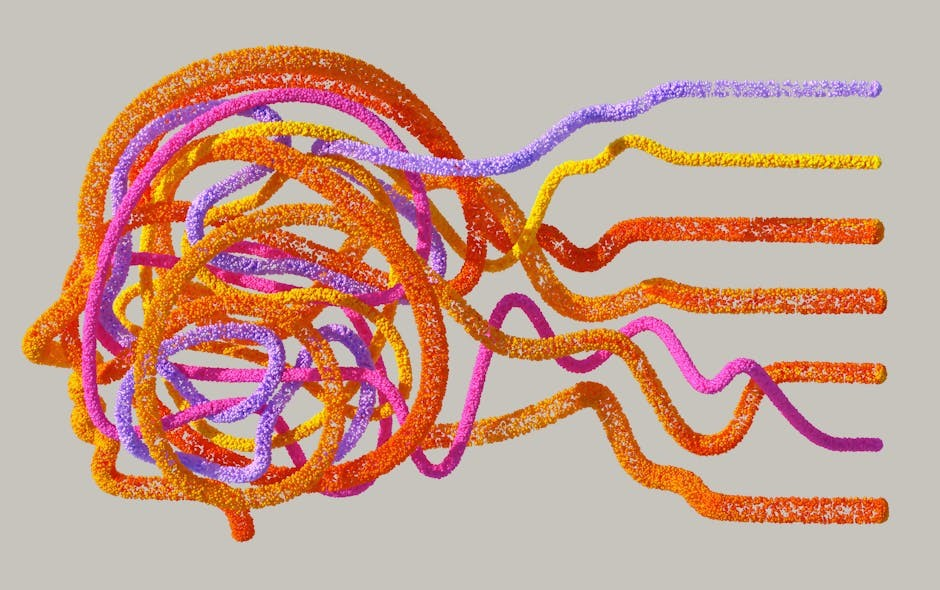The teenage brain undergoes significant developmental changes‚ making it prone to distraction. Understanding these shifts is crucial for addressing behavioral and cognitive challenges during adolescence effectively.
1.1 Definition and Overview
The distracted teenage brain refers to the unique cognitive and emotional challenges adolescents face due to rapid neurological development. During this phase‚ the brain undergoes significant structural and functional changes‚ particularly in regions responsible for attention‚ decision-making‚ and impulse control. These changes‚ coupled with hormonal fluctuations and external influences like technology and social pressures‚ often lead to heightened distractibility and impulsive behaviors. Understanding these dynamics is essential for addressing the specific needs of teenagers and developing effective strategies to support their cognitive and emotional growth during this critical period.
1.2 The Importance of Understanding Teenage Brain Development
Understanding teenage brain development is crucial for addressing the cognitive‚ emotional‚ and behavioral challenges adolescents face. Neuroscience provides insights into how the brain matures‚ influencing decision-making‚ impulse control‚ and focus. Recognizing these changes helps parents‚ educators‚ and policymakers create supportive environments tailored to teenagers’ unique needs. By fostering awareness‚ we can develop strategies to enhance focus‚ emotional intelligence‚ and resilience‚ ultimately empowering teens to navigate their developmental journey more effectively and achieve their full potential in an increasingly complex world.
1.3 The Role of Neuroscience in Explaining Teenage Behavior
Neuroscience plays a pivotal role in explaining teenage behavior by revealing the biological basis of cognitive and emotional changes. Studies show that the adolescent brain undergoes significant structural and functional development‚ particularly in regions linked to decision-making and impulse control. Hormonal fluctuations‚ such as dopamine surges‚ contribute to reward-seeking behaviors and distractibility. Understanding these neural mechanisms helps explain why teens often exhibit impulsive and unpredictable actions. This knowledge also provides a foundation for developing strategies to support their emotional and cognitive growth during this critical phase of development.

Key Characteristics of the Teenage Brain
The teenage brain exhibits rapid development‚ heightened impulsivity‚ and increased susceptibility to distraction. These traits stem from ongoing neural restructuring and fluctuating dopamine levels‚ influencing focus and decision-making.
2.1 Neurodevelopmental Changes During Adolescence
During adolescence‚ the brain undergoes significant restructuring‚ particularly in regions linked to decision-making and emotional regulation. Myelination and synaptic pruning improve neural efficiency‚ yet this process can lead to temporary challenges in focus and impulse control. Hormonal fluctuations‚ especially dopamine surges‚ drive reward-seeking behaviors and contribute to heightened distractibility. These developmental changes explain why teenagers often exhibit impulsive decisions and struggle with sustained attention‚ making this phase critical for understanding their cognitive and emotional growth.
2.2 The Impact of Hormonal Fluctuations on Focus
Hormonal changes during adolescence significantly affect focus and attention. Surges in dopamine‚ a neurotransmitter linked to reward and pleasure‚ often lead to heightened distractibility. Teens may prioritize immediate gratification over long-term goals‚ making sustained focus challenging. Additionally‚ fluctuating estrogen and testosterone levels can influence emotional reactivity‚ further diverting attention. These hormonal shifts‚ combined with the ongoing development of the prefrontal cortex‚ create a perfect storm that impairs concentration and decision-making abilities during this critical developmental phase.
2.3 Why Teens Are More Prone to Impulsivity and Distraction
Teenagers often exhibit heightened impulsivity and distractibility due to the immaturity of the prefrontal cortex‚ which regulates decision-making and focus. The brain’s reward system‚ driven by dopamine‚ prioritizes immediate gratification over long-term goals‚ leading to impulsive choices. Additionally‚ the constant stimulation from digital devices and social environments overwhelms their developing neural circuits. This combination of biological and environmental factors creates a perfect storm‚ making it difficult for teens to maintain concentration and resist distractions in their daily lives.

Causes of Distraction in Teenagers
Teenagers face various distraction sources‚ including excessive screen time‚ social pressures‚ and emotional stress. These factors interfere with their ability to concentrate and stay focused effectively.
3.1 The Role of Technology and Social Media
Technology and social media significantly contribute to teenage distraction. Constant notifications‚ endless scrolling‚ and the instant gratification of likes create a cycle of dopamine-driven behaviors. Adolescents’ developing brains are particularly susceptible to these distractions‚ as they prioritize short-term rewards over long-term goals. Social media platforms‚ designed to be addictive‚ disrupt focus and reduce attention spans. This digital overload not only impacts academic performance but also shapes how teens perceive and interact with their environment‚ making it crucial to address these influences in fostering better concentration habits.
3.2 Peer Pressure and Social Influences
Peer pressure and social influences play a substantial role in teenage distraction. Adolescents often prioritize social acceptance over focus‚ driven by fear of missing out (FOMO) and the desire to fit in. Social dynamics can lead to impulsive decisions‚ as teens seek validation from peers. This susceptibility stems from the developing brain’s heightened sensitivity to social cues. The need for belonging and approval often overshadows academic or personal goals‚ making it challenging for teens to maintain concentration and prioritize tasks effectively in their immediate environment.
3.3 Academic and Emotional Stressors
Academic demands and emotional challenges significantly contribute to teenage distraction. Heavy workloads‚ high expectations‚ and fear of failure create stress‚ making it difficult for teens to concentrate. Emotional struggles‚ such as anxiety or family issues‚ often preoccupy their minds‚ further reducing focus. These stressors interact with the developing brain’s limited ability to regulate emotions‚ leading to divided attention and impulsive behaviors. Managing these pressures is crucial for helping teens maintain focus and achieve their academic and personal goals effectively.

The Science Behind Teenage Distractibility
Neuroscience reveals that adolescent brains are wired to seek rewards and novelty‚ often leading to distraction. Immature prefrontal cortex and dopamine-driven impulses play key roles in this behavior.
4;1 Brain Structure and Function in Adolescents
Adolescent brains undergo significant structural changes‚ particularly in the prefrontal cortex‚ which regulates decision-making and focus. The amygdala‚ responsible for emotions‚ often overshadows the prefrontal cortex during this phase‚ leading to heightened emotional responses. Myelinization‚ the process of nerve fiber insulation‚ improves neural communication but is incomplete‚ affecting impulse control. These developmental imbalances contribute to distractibility and impulsive behaviors‚ as the brain prioritizes immediate rewards over long-term goals. Understanding these neurological dynamics is essential for addressing teenage distractibility effectively.
4.2 The Role of Dopamine in Reward-Seeking Behaviors
Dopamine plays a central role in reward-seeking behaviors during adolescence. The brain’s dopamine system is highly sensitive‚ making teens more inclined toward immediate rewards‚ such as social media likes or gaming. This heightened sensitivity often leads to distraction‚ as the brain prioritizes these instant gratifications over long-term goals. Imbalances in dopamine levels can exacerbate impulsive decisions‚ making it challenging for teens to focus on tasks that offer delayed rewards. Understanding dopamine’s influence helps explain why adolescents are more prone to engaging in rewarding yet distracting activities.
4.3 How Neural Plasticity Shapes Learning and Behavior
Neural plasticity‚ the brain’s ability to reorganize itself‚ plays a crucial role in shaping learning and behavior during adolescence. This adaptability allows teens to absorb new information and skills rapidly. However‚ it also makes them vulnerable to distractions‚ as their brains are highly sensitive to environmental stimuli. Positive experiences‚ such as engaging in meaningful activities‚ can strengthen beneficial neural connections‚ while negative ones may hinder focus. Understanding neural plasticity highlights the importance of providing supportive environments to guide healthy cognitive and behavioral development in teenagers.

Strategies for Improving Focus in Teenagers
Implementing mindfulness practices‚ effective time management‚ and ensuring adequate sleep can significantly enhance focus in teenagers‚ helping them navigate academic and personal challenges more effectively.
5.1 Mindfulness and Meditation Practices
Mindfulness and meditation are powerful tools for enhancing focus in teenagers. By practicing these techniques‚ teens can improve their ability to concentrate and reduce distractions. Regular mindfulness exercises help train the brain to stay present‚ while meditation strengthens self-regulation and emotional stability. These practices not only boost academic performance but also contribute to overall mental well-being. Incorporating mindfulness into daily routines can create a foundation for long-term cognitive and emotional resilience in adolescents.
5.2 Time Management and Organizational Skills
Effective time management and organizational skills are essential for helping teenagers stay focused. By prioritizing tasks and creating structured schedules‚ teens can better manage distractions and increase productivity. Tools like planners and digital apps can aid in organizing schoolwork and personal responsibilities. Breaking tasks into smaller‚ manageable steps reduces overwhelm and enhances completion rates. Teaching these skills fosters independence and accountability‚ empowering teens to handle multiple responsibilities efficiently and maintain balance in their lives.
5.3 The Importance of Sleep and Physical Activity
Sufficient sleep and regular physical activity are critical for improving focus in teenagers. Sleep plays a vital role in cognitive function‚ memory consolidation‚ and emotional regulation‚ while physical activity enhances brain health and reduces stress. Teens who engage in consistent exercise often exhibit better concentration and reduced distractibility. Prioritizing sleep and incorporating daily physical activity into routines can significantly improve academic performance and overall well-being‚ helping adolescents maintain focus and manage distractions more effectively.

The Role of Parents and Educators
Parents and educators play a crucial role in guiding teenagers to manage distractions and build focus through supportive strategies‚ collaboration‚ and fostering a conducive learning environment.
6.1 Creating a Supportive Environment for Teenagers
Creating a supportive environment involves fostering open communication‚ setting clear boundaries‚ and encouraging healthy habits. Parents and educators should promote emotional intelligence and provide tools to manage stress and distractions. By understanding the challenges of the teenage brain‚ they can offer tailored support‚ helping teens develop self-regulation skills. A structured yet flexible environment can enhance focus and academic success‚ while also nurturing personal growth and resilience.
6.2 Effective Communication Strategies
Effective communication with teenagers involves active listening‚ empathy‚ and clarity. Parents and educators should encourage open dialogue‚ validating their feelings while setting clear expectations. Using positive reinforcement and providing constructive feedback helps build trust and accountability. Engaging in regular‚ meaningful conversations can foster emotional intelligence and resilience. By addressing concerns without judgment‚ adults can guide teens in navigating distractions and developing better focus. Consistent‚ supportive communication is key to helping teenagers thrive academically and emotionally.
6.3 Encouraging Healthy Habits and Boundaries
Encouraging healthy habits and boundaries is essential for helping teenagers manage distractions. Parents and educators should promote consistent routines‚ including adequate sleep‚ balanced nutrition‚ and regular physical activity. Setting limits on screen time and social media use can reduce distractions and improve focus. Establishing clear expectations for homework and study time fosters responsibility. Positive reinforcement and consistent boundaries help teenagers develop self-discipline and better time management skills. These habits not only enhance academic performance but also contribute to overall well-being and resilience in navigating a distracting world.

The Impact of Digital Devices on Teenage Focus
Digital devices‚ especially smartphones and social media‚ significantly distract teenagers‚ interfering with cognitive development and attention span‚ while also affecting deep thinking and problem-solving abilities.
7.1 How Screen Time Affects Cognitive Development
Excessive screen time impacts teenage cognitive development by altering brain structure and function‚ particularly in areas responsible for memory‚ attention‚ and problem-solving. Frequent digital stimulation can lead to reduced attention spans and decreased ability to focus on complex tasks. The constant exposure to notifications and multitasking reduces the depth of cognitive processing‚ making it harder for teens to engage in deep thinking and critical analysis. This interference with neural development can hinder academic performance and long-term intellectual growth‚ emphasizing the need for balanced screen use during adolescence.
7.2 The Role of Social Media in Shaping Teenage Behavior
Social media significantly influences teenage behavior‚ shaping identity‚ social interactions‚ and decision-making. Adolescents often seek validation through likes and shares‚ which can alter self-perception and self-esteem. Platforms foster comparisons and competition‚ driving teens to conform to societal or peer expectations. This constant exposure can lead to impulsive behaviors‚ as teens mimic trending actions or seek instant gratification. Additionally‚ social media consumption can reduce critical thinking skills‚ as quick‚ superficial interactions replace deeper‚ reflective thought processes. Parents and educators must guide teens to navigate these influences responsibly and maintain a healthy balance in their digital lives.
7.3 Strategies for Reducing Digital Distractions
Implementing time limits on devices and creating tech-free zones can help minimize digital distractions. Encouraging offline activities‚ such as sports or hobbies‚ redirects focus away from screens. Using app blockers to restrict access to non-essential apps during study hours is effective. Parents and educators should model healthy habits and educate teens about the importance of digital balance. Scheduling regular screen-free breaks can improve concentration and overall well-being. These strategies empower teens to manage distractions and foster a healthier relationship with technology.

Emotional Intelligence and Self-Regulation
Emotional intelligence and self-regulation are vital for helping teenagers navigate distractions and challenges. These skills enable teens to manage emotions‚ maintain focus‚ and make thoughtful decisions.
8.1 Understanding Emotional Intelligence in Teenagers
Emotional intelligence (EI) in teenagers refers to their ability to recognize‚ understand‚ and manage their own emotions and those of others. Developing EI helps teens navigate social dynamics‚ make informed decisions‚ and handle stress effectively. Studies suggest that higher EI correlates with better academic performance and fewer behavioral issues. Adolescents with strong EI are more adept at regulating their emotions‚ leading to improved focus and reduced distractibility. Cultivating EI involves teaching self-awareness‚ empathy‚ and effective communication skills‚ which are essential for personal and academic success.
8.2 Techniques for Developing Self-Regulation Skills
Developing self-regulation skills in teenagers involves teaching them to manage emotions‚ thoughts‚ and behaviors effectively. Techniques include mindfulness practices‚ such as meditation and deep breathing‚ which help teens stay focused and calm. Setting clear goals and breaking tasks into smaller steps can enhance organizational abilities. Parents and educators can encourage self-monitoring by providing structured routines and positive reinforcement. These strategies help adolescents build resilience‚ reduce impulsivity‚ and improve their ability to concentrate‚ leading to better academic and personal outcomes.
8.3 The Connection Between Emotional Intelligence and Academic Success
Emotional intelligence (EI) plays a crucial role in academic success by enabling teenagers to manage stress‚ communicate effectively‚ and maintain focus. High EI helps teens navigate social dynamics‚ reducing distractions and fostering collaboration. It enhances self-awareness‚ allowing them to recognize and regulate emotions‚ which improves decision-making and motivation. By cultivating empathy and interpersonal skills‚ emotionally intelligent students build stronger relationships with peers and teachers‚ creating a supportive learning environment. These abilities collectively contribute to better academic performance and long-term personal growth.

Real-World Examples and Case Studies
Teenagers often face distractions like social media and peer pressure‚ impacting their focus. Case studies reveal how strategies like mindfulness and structured schedules can improve concentration and academic outcomes.
9.1 How Teens Navigate Distractions in School
Teenagers in school often face distractions such as social media‚ peer pressure‚ and digital devices. Many students use strategies like turning off notifications or seeking quiet spaces to stay focused. Schools also play a role by implementing policies to minimize disruptions‚ such as limiting phone use or incorporating mindfulness exercises. However‚ distractions can still impact academic performance and mental health. Understanding these challenges is key to developing effective support systems for teenagers navigating modern educational environments.
9.2 Success Stories of Overcoming Distractibility
Many teenagers have successfully overcome distractibility by implementing focused strategies. For instance‚ some students use mindfulness practices to improve concentration‚ while others rely on organizational tools to manage their time effectively. Schools have also reported success with programs that promote self-regulation skills. Parents and educators often play a pivotal role by creating structured environments and encouraging healthy habits. These success stories highlight the importance of tailored approaches to help teens thrive academically and emotionally‚ even in distracting environments.
9.3 Common Challenges Faced by Teenagers in Staying Focused
Teenagers often struggle with staying focused due to multiple distractions‚ such as technology‚ social media‚ and multitasking. Hormonal fluctuations and impulsivity further exacerbate these challenges. Academic pressure‚ peer influence‚ and emotional stressors also play a significant role. Many teens find it difficult to prioritize tasks and manage their time effectively‚ leading to procrastination. Additionally‚ the constant availability of digital devices creates an environment where sustained attention becomes increasingly difficult. Understanding these challenges is essential for developing strategies to help teens improve their focus and self-regulation skills.

The Future of Understanding the Teenage Brain
Emerging neuroscience research and technological advancements promise deeper insights into adolescent brain development‚ offering innovative strategies to support cognitive and emotional growth in future generations effectively.
10.1 Emerging Research and Trends in Neuroscience
Recent advancements in neuroscience are uncovering the complexities of the teenage brain‚ revealing how developmental changes influence behavior and cognition. Cutting-edge technologies like functional MRI and neuroimaging are providing deeper insights into brain plasticity and maturation patterns. Studies focus on understanding how environmental factors‚ such as technology use and social interactions‚ shape neural development. These findings are paving the way for tailored interventions to support adolescents in managing distractions and improving focus. By bridging neuroscience with education‚ researchers aim to create evidence-based strategies for fostering healthier brain development and resilience in teens.
10.2 The Role of Education in Preparing Teens for the Future
Educational systems play a pivotal role in equipping teenagers with the skills to navigate future challenges. By integrating insights from neuroscience‚ schools can develop curricula that cater to the unique needs of the adolescent brain. Emphasizing self-regulation‚ emotional intelligence‚ and effective time management helps teens build resilience. Educators are increasingly adopting strategies that promote active learning and critical thinking‚ fostering an environment where students can thrive despite distractions. Tailored educational approaches not only enhance academic performance but also empower teens to manage distractions effectively‚ preparing them for lifelong success.
10.3 How Society Can Better Support Teenage Development
Society can play a crucial role in fostering healthy teenage development by creating supportive environments that promote mental and emotional well-being. Encouraging open conversations about mental health and providing access to resources can help teens navigate challenges. Communities can also advocate for policies that reduce stressors‚ such as academic pressure‚ and promote balanced lifestyles. By fostering collaboration between schools‚ families‚ and healthcare systems‚ society can ensure teens receive the guidance and tools needed to thrive in an increasingly complex world.
Frequently Asked Questions (FAQs)
FAQs address common questions about teenage distraction‚ such as its causes‚ strategies to improve focus‚ and the role of schools. This section provides clear‚ concise answers.
The book serves as a valuable resource for parents and educators‚ offering practical advice to support teens effectively.
11.1 What Are the Most Common Causes of Teenage Distraction?
Teenage distraction often stems from neurodevelopmental changes‚ hormonal fluctuations‚ and external factors like technology and social pressures. The brain’s reward system‚ driven by dopamine‚ seeks instant gratification‚ making teens prone to distractions from social media and digital devices. Additionally‚ emotional stressors and academic pressures can overwhelm their developing cognitive systems‚ further reducing focus. Understanding these factors helps in addressing the root causes of distractibility effectively.
11.2 How Can Parents Help Teens Improve Their Focus?
Parents can play a significant role in helping teens improve focus by fostering a supportive environment. Encouraging mindfulness practices‚ promoting consistent sleep schedules‚ and modeling healthy screen use are effective strategies. Establishing clear boundaries and providing structured time management tools can also enhance concentration. Additionally‚ open communication and positive reinforcement help build self-regulation skills‚ empowering teens to prioritize tasks and reduce distractions.
11.3 What Role Do Schools Play in Addressing Teenage Distractibility?
Schools play a critical role in addressing teenage distractibility by creating structured learning environments and promoting focus. Educators can integrate mindfulness practices‚ provide resources for stress management‚ and teach time management skills. Schools can also encourage physical activity and emphasize the importance of sleep. By fostering a supportive atmosphere and offering individualized support‚ schools help teens develop self-regulation skills and improve their ability to stay focused in the classroom.
The teenage brain’s complexity is marked by distractions and impulsivity‚ but with the right strategies and support‚ teens can thrive‚ fostering resilience and lifelong success.
12.1 Summary of Key Points
The teenage brain’s distractibility stems from neurodevelopmental changes‚ hormonal fluctuations‚ and external factors like technology. Understanding these elements is key to addressing cognitive challenges. Strategies such as mindfulness‚ sleep management‚ and parental support can enhance focus. Emotional intelligence and self-regulation play pivotal roles in overcoming impulsivity. By fostering a supportive environment and encouraging healthy habits‚ teens can navigate distractions effectively‚ leading to improved academic and personal outcomes.
12.2 Final Thoughts on Supporting Teenage Brain Development
Supporting teenage brain development requires a holistic approach that balances understanding‚ empathy‚ and practical strategies. Encouraging emotional intelligence‚ mindfulness‚ and healthy habits fosters resilience. Parents and educators should create structured environments that promote focus while allowing natural exploration. By acknowledging the unique challenges of adolescence and providing tailored support‚ society can empower teens to thrive; Embracing a growth mindset and celebrating progress‚ no matter how small‚ helps build confidence and prepares them for future success.
12.3 Encouraging a Growth Mindset in Teenagers
Cultivating a growth mindset in teenagers involves fostering resilience and a belief in their ability to learn and grow. Parents and educators should praise effort‚ not just results‚ and encourage perseverance through challenges. Modeling lifelong learning and embracing failures as opportunities for growth can inspire teens to adopt this mindset. By promoting self-reflection and goal-setting‚ adults help teenagers develop confidence and adaptability‚ essential for navigating life’s complexities with optimism and determination.
